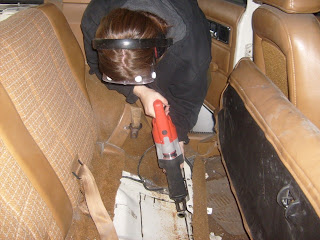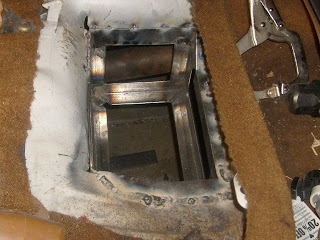To make room for the depth of the gauges, I had to do some hackery. First, I removed the three clips from the middle (these connected to the fuel gauge). Next, I used a hot knife to remove the surrounds from the former water and oil warning lights:
And here it is - all fitting nicely:
The light at the lower left is the former "fuel low" warning light. I think I'll repurpose it to be the "charge not complete" light. The light at the lower right is the former battery light. It will be repurposed to mean, "ignition key is turned on." There are five empty slots on the light panel to the left. I will use one of them to mean, "the charger is plugged in, so you can't go anywhere" light.




































